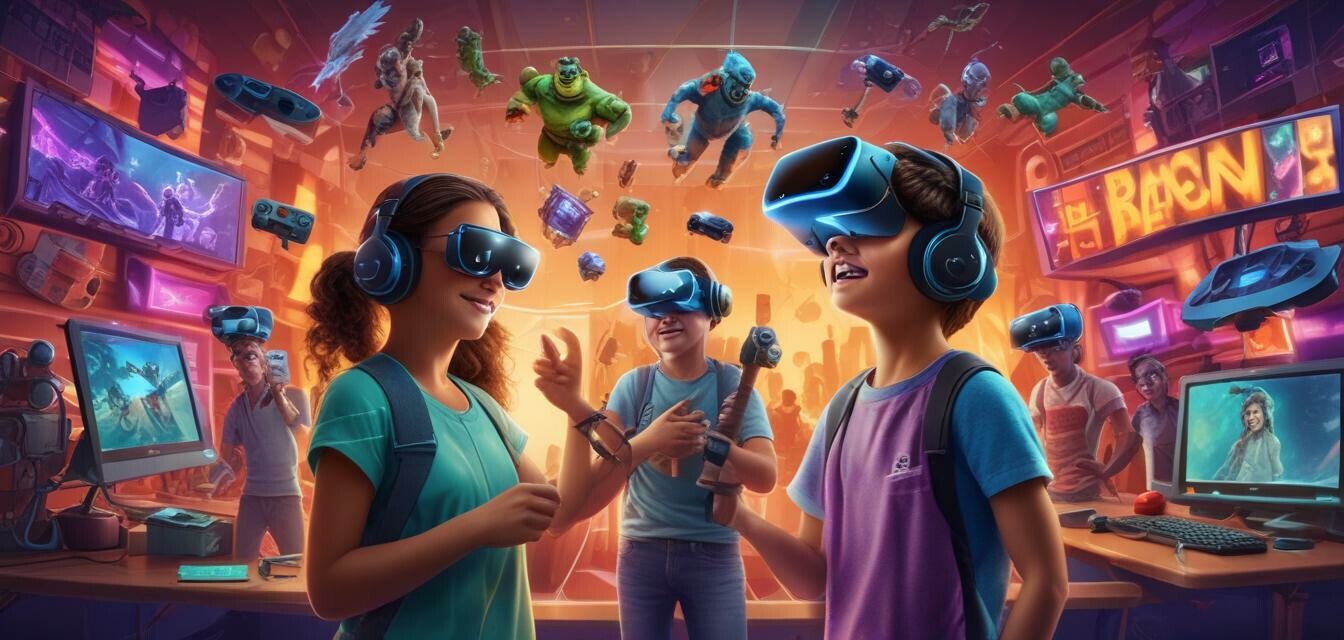
Interactive Gaming and Learning: Trends to Watch in 2025
Key Takeaways
- Interactive gaming is becoming essential in educational settings.
- 2025 will see advances in AR and VR technologies in kids' learning.
- The gaming industry's impact on cognitive skills is significant.
- Parental involvement is crucial in navigating gaming choices.
- Diverse platforms will enhance accessibility for all kids.
As we venture into 2025, the landscape of interactive gaming is transforming the way children learn and play. With advancements in technology and an understanding of educational methodologies, interactive games are no longer just entertainment—they're valuable tools for learning. This article will explore the trends in interactive gaming that are shaping educational experiences for kids.
The evolution of interactive gaming in education
The past few years have witnessed a remarkable shift in how gaming is perceived in educational contexts. The integration of interactive gaming into learning environments is reshaping not only how subjects are taught but also how children engage with educational content.
1. From passive to interactive learning
Traditional educational methods often emphasize rote memorization. However, interactive gaming creates an engaging environment that fosters problem-solving and critical thinking. Here are some key characteristics of interactive learning:
| Traditional Learning | Interactive Gaming Learning |
|---|---|
| Passive consumption of information | Active participation and engagement |
| Emphasis on memory | Focus on skills application and creativity |
| Standardized testing | Adaptive assessments and feedback |
| Static content | Dynamic, interactive experiences |
Emerging technologies in educational gaming
As we move into 2025, several cutting-edge technologies are emerging that further blur the lines between gaming and learning:
1. Augmented Reality (AR) and Virtual Reality (VR)
AR and VR are redefining the educational gaming space by immersing children in captivating environments. Here’s how they are utilized:
- Hands-on experiences through virtual science experiments.
- Exploring historical events through interactive simulations.
- Enhancing spatial reasoning with virtual puzzles and challenges.
2. Artificial Intelligence (AI)
AI personalizes learning experiences, adapting to each child’s pace and style. Examples of AI in educational games include:
- Real-time feedback on performance.
- Adaptive learning paths based on user behavior.
- Gamified assessments to track progress.
Interactive gaming and cognitive skills development
Research supports the notion that interactive gaming can enhance various cognitive skills in children. Here are some areas where positive effects have been observed:
- Problem-solving: Games challenge players to figure out solutions in complex scenarios.
- Collaboration: Multiplayer games encourage teamwork and communication.
- Decision-making: The fast-paced nature of gaming enhances quick thinking.
Pros
- Promotes active learning and engagement.
- Enhances critical skills crucial for the future.
- Inculcates a love for learning through gameplay.
- Fosters collaboration among peers.
Cons
- Potential for overexposure if not managed properly.
- Might lead to challenges in screen time regulation.
- Cost of high-quality games and devices can be high.
Parental involvement in gaming choices
As interactive gaming becomes more prevalent in children's education, parental guidance is essential. Parents can help by:
- Reviewing and selecting age-appropriate games.
- Encouraging discussions about educational content.
- Setting limits on screen time to balance other activities.
Accessibility and diversity in interactive gaming
The future of interactive gaming in education must also focus on inclusivity, ensuring that all children, regardless of their backgrounds, have equal access to learning opportunities. Some strategies include:
- Developing games that accommodate different learning styles.
- Creating bilingual or multi-language support in games.
- Offering affordable options for families.
Conclusion
In 2025, the marriage of gaming and education will continue to evolve, providing children with unparalleled opportunities to engage with learning material. As technology advances, interactive gaming is set to become a fundamental part of childhood education, equipping future generations with essential skills in an engaging and enjoyable manner. To explore more on related topics, do check out our [Buying Guides](/blog/buying-guides) and [Product Comparisons](/blog/product-comparisons) for a deeper dive into the educational gaming landscape.